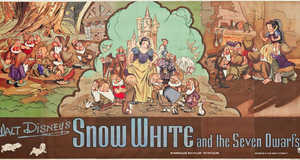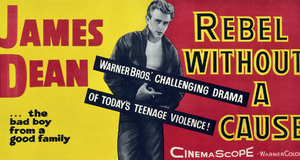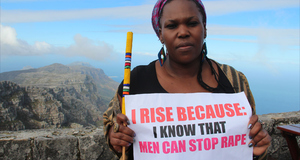Hegemonic Masculinity in Boys Don't Cry (1999)
By
2014, Vol. 6 No. 03 | pg. 2/2 | « Gendered ViolenceWhen looking at gendered violence it is important to consider the configuration of gender practices within hegemonic masculinity (Messerschmidt, 1993; Jones, 2004). Gendered violence committed by men is “designed to control, dominate and express authority and power” (Kordvani, 2002, p. 2). In today’s society there is a growing connection between being a man and being violent. Violence associated with hegemonic masculinity, as a cultural norm, places pressure on men to use aggression as a method to solving problems. The scene in the film, which occurs after John and Tom find out that Brandon is not biologically male, depicts gendered violence used as a way to assert their masculinity over Brandon (Goodey, 1997; Prest, 2012). After Brandon is exposed as a female, John and Tom bring Brandon to an abandoned parking lot where they viciously beat and rape him (Peirce, 1999; Swan, 2001). The two men use rape and abuse as a way to re-enforce their masculinity, making Brandon take a submissive ‘female’ role. Brandon’s sexuality is seen as a threat to the men’s position within their group and the use of gendered violence allows them to re-enforcing their control over women (Goodey, 1997; Siegel, 2003). The two men who rape Brandon are engaging in what has been labeled as “corrective rape,” which is described as the rape of a lesbian or trans women by a man to either punish her, or to ‘correct’ her sexual behaviour (Wood, 2011, p. 297). The Amplification of HeterosexualityHegemonic masculinity, in Western culture, has caused the targeting of individuals who do not conform to heterosexual norms to become accepted and encouraged (Kordvani, 2002). San Francisco’s Community United Against Violence (CUAV) reported that out of 920 cases, of homophobic violence, committed in 1990, where the perpetrator’s gender was known, 92% were males (Herek & Berrill, 1992). This statistic is not surprising considering a number of theorists have linked hegemonic masculinity to heterosexuality and homophobia (Flood, 2007; Howson, 2006; Lusher & Robins, 2006). A central element of hegemonic masculinity is seeing women as sexual objects, used to provide heterosexual men with sexual validation (Donaldson, 1993; Happé & Hüsken, 2007). Hostility towards homosexuality is seen as fundamental in the construction of heterosexual masculinity which sees homosexuality as subversive and associated with effeminacy (Donaldson, 1993).After John and Tom find out about the report filed by Brandon they get drunk and set out to kill him: Brandon is confronted by the two men at Candace’s house. John shoots Brandon in the head killing him, while Tom shoots Candace in the head in front of her infant child (Prest, 2012). John then stabs Brandon repeatedly in the abdomen before fleeing the scene (Peirce, 1999). The film ends with a camera heading down a deserted open road, representing the freedom Brandon sought his whole life, but never was able to achieve. Brandon was getting ready to go down that road with Lana to escape, minutes before he was executed (Siegel, 2003; Swan, 2001). Brandon’s experience, portrayed within the film, as a transgendered person, shows the restricting categories of gender that are produced and imposed on people by the wider culture (Fagot & Leinbach, 1993; Herz, 2007). In order for someone to be seen as a real ‘man,’ they must only show particular parts of their selves that are defined by society as ‘manly.’ ConclusionThe film Boys Don’t Cry shows the portrayal of a transsexual female who, in the end, was raped and murdered because of her unwillingness to become submissive in a world controlled by hegemonic masculinity (Kordvani, 2002). The dominant ideologies associated with hegemonic masculinity reinforce power to heterosexual men over those with differently abled bodies, women, homosexuals, and transsexuals (Goodey, 1997). These people, like Brandon, are deemed as ‘outsiders’ who become targets of social punishments (Butler, 1990). Violent hate crimes committed against the LGBTQ community are especially brutal. Like the murder of Brandon Teena, who was not only shot but stabbed multiple times, victims of homophobic hate crimes are targets of aggressive over-kill. Examples of aggression in the deaths of transgendered persons, by male attackers, can be seen in the deaths of Rita Hester and Barretta Williams. In December 1998, Rita Hester a male to female transgendered person was stabbed nearly 20 times in her apartment located in Boston, Massachusetts (Cuklanz & Moorti, 2009,). Less than a year later in July 1999, Barretta Williams was tied up, beaten and shot sixteen times in Chicago, Illinois (Stevens-Miller, 2000). Although Brandon Teena was the first transgender murder to receive a large amount of media attention, it was not the last. In the winter of 2003 the Southern Poverty Law Center’s Intelligence Report (SPLCIR) noted the murders of 14 transgendered persons in the United States, and by the end of September 2003 another thirteen (Altschiller, 2005). The FBI reported a 13 percent rise in homophobic and transphobic violence from 2009 to 2010, and a 23 percent rise in the murders of LGBTQ people (Dixon et. al., 2010). When taking these statistics into consideration, it is important to note that hate crimes against LGBTQ individuals remain grossly un-reported (Herek & Berrill, 1992). The social construction of homosexuality, like that of any other characteristic used to justify unequal treatment, has been placed into a category that is seen as threatening to notions of hegemonic masculinity. The rise in hate crimes against LGBTQ persons, as shown in the movie Boys Don’t Cry, is linked to the dominant heteronormative masculine ideologies present within society (Herek & Berrill, 1992; Messerschmidt, 1993). In order to properly address this inequality, we must first understand the misguided social perceptions. Whether it is the actions of a single person, or an entire town, discrimination at any level should not be tolerated. As suggested by Halberstam (1998), in order to address motivations of hate crimes, consideration should be given to transexuality and transgenderism, as presenting transgressive forms of masculinity, which disrupts the hegemonic norm. ReferencesAnderson, E. (1999). Code of the Street: Decency, Violence, and the Moral Life of the Inner City. New York: W.W Norton. Altschiller, D. (2005). Hate Crimes: A Reference Handbook. Santa Barbara, Calif.: ABC-CLIO. Brod, H. (1987). Cross-Culture, Cross-Gender. Cultural Marginality and Gender Transcendence. American Behavioural Scientist 31, 5-11. Butler, J. (1990). Gender Trouble: Feminism and the Subversion of Identity. New York: Routledge. Connell, R. W. (1987). Gender and Power: Society, the Person and Sexual Politics. Cambridge: Polity Press. Connell, R. W, & Messerschmidt, J. (2005). Hegemonic Masculinity: Rethinking the Concept. Gender & Society, 19(8), 829-859. Cuklanz, L. M., & Moorti, S. (2009). Local Violence, Global Media: Feminist Analyses of Gendered Representations. New York: Peter Lang. Dixon, E., Frazer, S., Brody, M., & Mirzayi, C. (2010). National Coalition of Anti-Violence Projects. Hate violence report, 1, 1-76. Donaldson, M. (1993). What Is Hegemonic Masculinity? Theory and Society, Special Issue: Masculinities, 22(5), 643-657. Fagot, B. I., & Leinbach, M. D. (1993). Gender-Role Development in Young Children: From Discrimination to Labeling. Developmental Review, 13(2), 205-224. Flood, M. (2007). International Encyclopedia of Men and Masculinities. London: Routledge. Foucault, M. (1978). The History of Sexuality. New York: Pantheon Books. Goodey, J. (1997). BOYS DON'T CRY Masculinities, Fear of Crime and Fearlessness. British Journal of Criminology, 37(3), 401-418. Halberstam, J. (1998). Female Masculinity. Durham, NC: Duke University Press. Hanna, J. L. (1988). Dance, Sex and Gender: Signs of Identity, Dominance, Defiance, and Desire. Chicago: University of Chicago Press. Happé, P., & Hüsken, W. N. (2007). Interludes and Early Modern Society: Studies in Gender, Power and Theatricality. Amsterdam: Rodopi. Herek, G. M., & Berrill, K. (1992). Hate Crimes: Confronting Violence against Lesbians and Gay Men. Newbury Park: Sage Publications. Herz, K. (2007). The Pressure to Conform to the "Correct" Gender in 'Boys Don't Cry' and 'Brokeback Mountain'. München: GRIN Verlag. Howson, R. (2006). Challenging Hegemonic Masculinity. London: Routledge. Hunt, R., & Dick, S. (2008). Serves you Right: Lesbian and Gay People’s Expectations of Discrimination. Stonewall, A4, 1-24. Jones, M. (2004). 'A Fight About Nothing': Constructions of Domestic Violence. South Australia: University of Adelaide. Karlson, I & M, Simonsson (Director) (2006, September 14). Gender Sensitive Pedagogy - an Analysis of Discourses of Gender-Related Work in the Swedish Preschool. European Conference on Educational Research. Lecture conducted from University of Geneva, Switzerland. Kimmel, M. S. (2000). The Gendered Society. New York: Oxford University Press. Kordvani, A. (Director) (2002, February 22). Hegemonic Masculinity, Domination and Violence against Women. Expanding Our Horizons: Understanding the Complexities of Violence Against Women. Lecture conducted from University of Sussex, Sydney, Australia. Lumsden, K. (2010). Gendered Performances in a Male-Dominated Subculture: 'Girl Racers', Car Modification and the Quest for Masculinity. Sociological Research Online, 15(3), 1-12. Lusher, D., & Robins, G. (2009). Hegemonic and Other Masculinities in Local Social Contexts. Men & Masculinities,11(4), 387-423. Messerschmidt, J. W. (1993). Masculinities and Crime: Critique and Reconceptualization of Theory. Lanham, Md.: Rowman & Littlefield. Olafsdóttir, G. (Director). (1998). The Brandon Teena Story [Documentary]. Nebraska: Docurama. Peirce, K. (Director). (1999). Boys Don't Cry [Motion picture]. Greenville Texas: Fox Searchlight Pictures. Prest, J. (2012). Boys Don't Cry. Xlibris Corporation. Rooney, M. (2001). Grave Endings: The Representation of Passing. Australian Humanities Review, 2001, N/A. Siegel, C. (2003). Curing Boys Don't Cry: Brandon Teena's Story. Genders, 37, 1-26. Skitka, L., & Maslach, C. (1990). Gender Roles and the Categorization of Gender-Relevant Behaviour. Sex Roles, 22(3), 133-150. Stevens-Miller, M. (2000). Discrimination and Hate Crimes against Gender Variant People. Gender Advocates Annual Report, 5, N/A. Swan, R. (2001). Boys Don't Cry. Film Quarterly, 54(3), 47-52. Wood, J. T. (2011). Gendered Lives: Communication, Gender, and Culture. Belmont, Calif.: Wadsworth. Suggested Reading from Inquiries Journal
Inquiries Journal provides undergraduate and graduate students around the world a platform for the wide dissemination of academic work over a range of core disciplines. Representing the work of students from hundreds of institutions around the globe, Inquiries Journal's large database of academic articles is completely free. Learn more | Blog | Submit Latest in Film & Media |


















